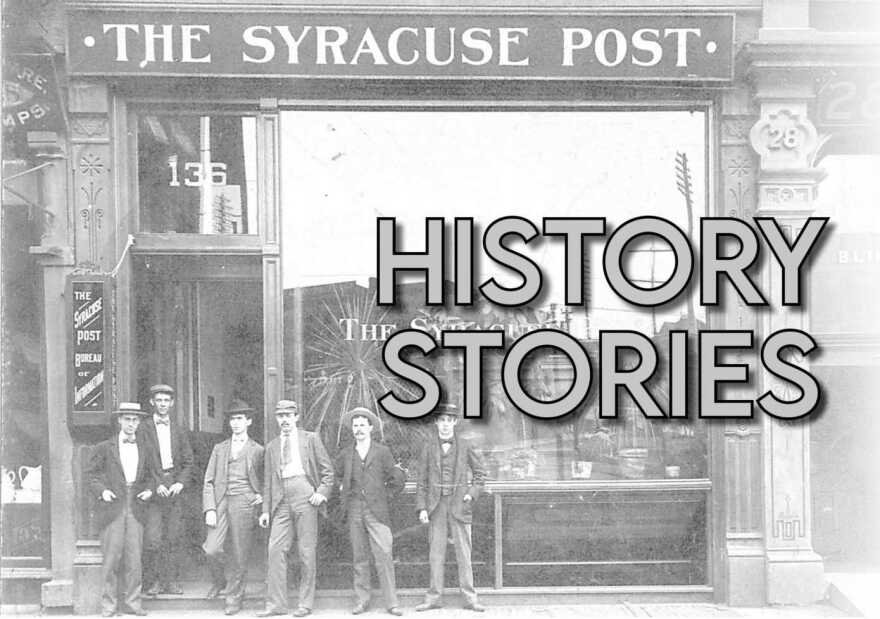A fund set up by CNY Arts to help arts agencies and individual artists stay afloat during the pandemic closures has reached a milestone. The COVID-19 Impact Fund recently received a $100,000 grant from the Trust for Cultural Resources to bring the total to nearly $883,000.
Executive director Stephen Butler says that means they’ve reached their goal with the seven counties they serve based on population.
“We divide that into the one million (residents) and have a goal for that county to receive at least that many dollars of impact funds. And we felt that was the most equitable way and transparent way of determining where the money went.”
About half of the money raised has been distributed to more than 100 organizations and artists. Butler knows the impact varies on organizations and individuals.
“Many of them still survive. I couldn’t say that they’re thriving right now. Individual artists and technicians, I’m more concerned about. I do think people have left the arts or have left the area (to) where they thought they could get more work.”
The CNY Arts Fund, #SAVETHEARTSCNY, is still seeking donations: Donations can be made at cnycf.org/cnyartscovidimpact or by mailing a check payable to: CNY Arts COVID-19 Impact Fund, c/o Central New York Community Foundation, 431 East Fayette Street, Syracuse, NY 13202. Corporate matching-gifts are welcome. (Source:CNYArts.org)
Butler says national surveys indicate there’s a 55 percent unemployment rate among actors, and it’s probably the same or greater for musicians who have no place to play. He says they’ll be conducting a survey soon.
“…so we can get a better handle on exactly what the arts, culture, and heritage organizations and individual artists are seeing right now and what they project will happen in the next 12 months.”
Butler says he’s been encouraged by the level of support from the state and federal governments to provide pandemic relief for the arts, even if the future for some remains unknown.
“There are organizations that have gone silent. And considering our industry is about communication, that concerns me very much. And I don’t know yet how many of those that have shuttered during the pandemic, when we’re going to find out (if) they do not plan to reopen.”
He hopes to know in the months ahead. Butler says the streams of relief funds combined with a gradual reopening should lead to a better future. But he adds it could take up to two years before organizations are fully restabilized.
(Artists and Organizations can apply for grants here.)
ORGANIZATIONS THAT RECEIVED COVID 19 IMPACT FUNDS STAYED ALIVE
Local arts organizations are using the CNY Arts Covid-19 impact fund to help stay afloat during difficult times. Syracuse Community Choir Director Karen Mihalyi says the beginning of the pandemic was mass confusion as the choir estimated it would lose about 50-thousand-dollars. The group received two grants that helped preserve the it’s mission.
“What we did was we used our grant money to create a year-and-a-half of programming that would keep us connected to our community, people thinking about music, people singing in some way, and build more of an audience, we hope, with our online presence.”
The group was able to put on summer concerts and a holiday concert. Now the Arts funds are helping them stay afloat while they plan for a possible fall performance and look to 2022.

The Onondaga Historical Association also received some of the funds, which Director of Development Lisa Romano Moore says allowed them to maintain some of their programming as well, especially at the Onondaga Native American museum.
“We relied fairly heavily on some of the federal support and the grants that were available at the state and local level to try and make sure that we were able to create content with high quality images and audio and video content. Like so many, we had o pivot quickly and we were grateful for the support of funders that helped us do that.”
While visitors were down this year, Moore says they put more gift-shop products online, an important source of revenue. She adds that museum is preparing for the summer, including popular ‘ghost walks’, and they’re anxious to see school groups again. She adds the OHA is not only early history, it’s also keeping track of historic moments of the pandemic.



